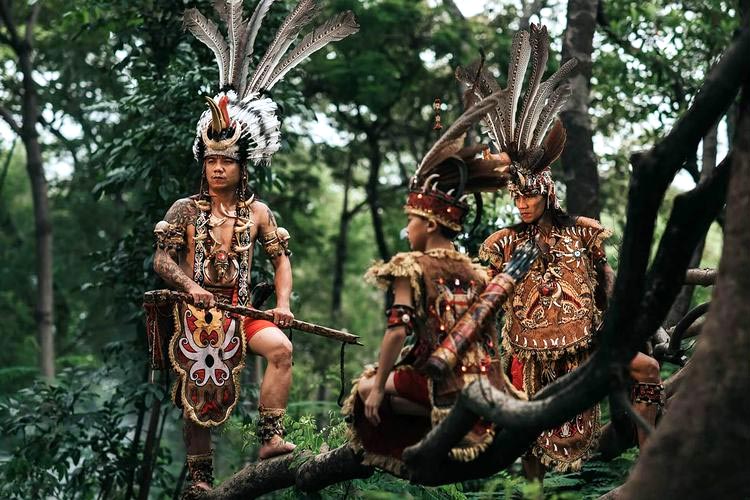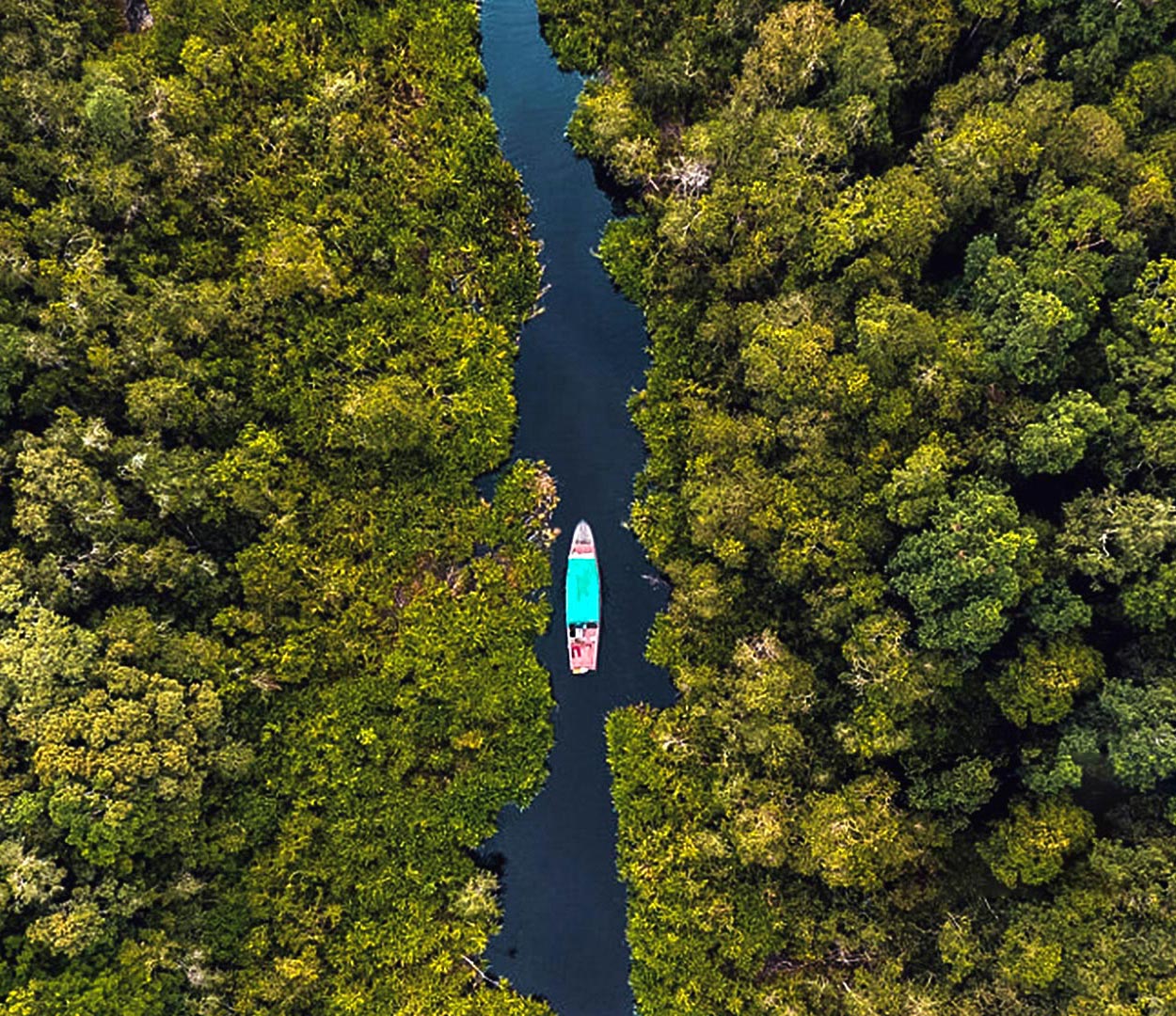
Kalimantan
Kalimantan’s beauty shines in its lush rainforests, diverse wildlife like orangutans and gibbons, and fascinating Dayak cultures. Immerse yourself in vibrant green landscapes, encounter gentle giants and exotic birds, and discover ancient traditions in harmony with nature. Explore from trekking the rainforest to cruising the Mahakam River, all while respecting this precious ecosystem. Kalimantan awaits!

Some Kalimantan Travel Highlights
- Orangutan Sanctuary: Visit Tanjung Puting National Park to witness orangutans in their natural habitat and explore the parks riverine landscapes.
- Floating Markets: Experience the vibrant floating markets of Banjarmasin, where locals trade fruits, vegetables, and handicrafts from boats.
- Meratus Mountains Trek: Embark on a trek through the lush Meratus Mountains, encountering unique flora, fauna, and indigenous Dayak communities.
- Kapuas River Expedition: Take a river expedition along the Kapuas River to explore remote villages and witness traditional Dayak culture.
- Peat Swamp Adventure: Venture into the mysterious peat swamps of Kalimantan to discover unique plant and animal life.
- Derawan Islands: Explore the Derawan Islands, a pristine archipelago known for its stunning coral reefs and diverse marine life.
- Cultural Encounters: Engage in cultural exchanges with indigenous Dayak communities, learning about their traditions and way of life.
- Mahakam River Cruise: Embark on a river cruise along the Mahakam River, visiting traditional Dayak villages and experiencing their unique ceremonies and art.
Explore and enjoy the diverse culture, nature and uniqueness of Kalimantan
Pangkalan Bun
Floating Market
Derawan
Mahakam River
Topography and Geology
Kalimantan’s topography is a diverse and stunning canvas, featuring a mosaic of landscapes that range from lush rainforests to rugged mountains and meandering rivers.
The island is known for its pristine natural beauty, which is deeply intertwined with its geological history. A significant portion of Kalimantan’s land is covered by dense tropical rainforests, contributing to its status as one of the world’s last great wildernesses.
The island is crisscrossed by countless rivers, including the mighty Kapuas River, one of the largest in Indonesia. The extensive river systems are a lifeline for the island’s inhabitants and are often used as transportation routes through the interior.
The geological history of Kalimantan is marked by ancient mountain ranges and volcanic activity. The Meratus Mountains in South Kalimantan and the Muller Mountain Range in East Kalimantan provide a rugged and picturesque backdrop for exploration.
These landscapes offer numerous trekking and hiking opportunities, revealing stunning vistas of untouched wilderness.
Biodiversity
Kalimantan is a biodiversity hotspot, renowned for its extraordinary range of flora and fauna. The island’s diverse ecosystems, from lowland rainforests to montane forests and peat swamps, support a vast array of species, many of which are endemic and unique to the region.
The rainforests of Kalimantan are home to iconic wildlife, including orangutans, proboscis monkeys, clouded leopards, and pygmy elephants. The island’s rivers and waterways are inhabited by crocodiles, freshwater dolphins, and diverse fish species. Birdwatchers can delight in spotting the magnificent hornbills, kingfishers, and countless other avian species.
Two of the most celebrated inhabitants of Kalimantan’s rainforests are the Bornean orangutan (Pongo pygmaeus) one of three species, and Proboscis Monkey (Nasalis larvatus). Tanjung Puting National Park in South Kalimantan, serves as a sanctuary for both of these marvelous primates.
Kalimantan’s peat swamps are also ecologically significant, providing habitat for unique plant species and rare animals such as the Bornean peat swamp frog. The island’s mangrove forests along its coastline further contribute to its rich biodiversity.
Human History and Cultures
Kalimantan’s human history is as varied as its landscapes. The island has been inhabited for thousands of years by indigenous Dayak tribes, each with its own distinct cultures, languages, and traditions.
These communities have historically lived in harmony with the natural environment, relying on hunting, gathering, and shifting agriculture. The Dayak tribes are known for their intricate art, such as woodcarvings and beadwork, and their unique longhouses, which serve as communal dwellings.
These longhouses, constructed using traditional methods, offer a glimpse into the indigenous way of life. Kalimantan’s history also includes the influence of external powers, with various kingdoms and sultanates having left their mark on the region over the centuries.
The influence of Islam can be seen in the architecture and customs of the coastal areas, while the indigenous Dayak cultures continue to thrive in the interior.
Ask us to design, curate and deliver a first class, unforgettable Indonesian Experience
